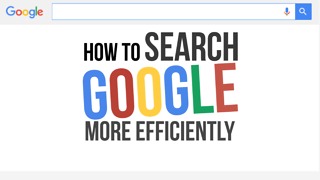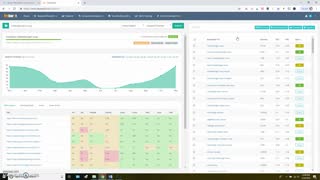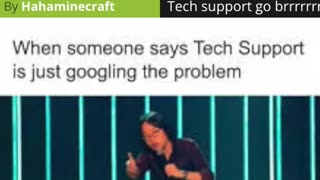They don’t give us a break search for SAI on Google
https://rumble.com/v2xnhe6-this-is-for-the-fools-among-us.html
.
Injecting particles into atmosphere to reflect sunlight, stratospheric aerosol injection (SAI), represents a potential technological solution to the threat of climate change. But could the cure be worse than the disease? Understanding low probability, yet plausible, high-impact cases is critical to prudent climate risk management and SAI deliberation. But analyses of such high impact outcomes are lacking in SAI research. This paper helps resolve this gap by investigating SAI's contributions to global catastrophic risk. We split SAI's contributions to catastrophic risk into four interrelated dimensions:
1. Acting as a direct catastrophic risk through potentially unforeseen ecological blowback.
2. Interacting with other globally catastrophic hazards like nuclear war.
3. Exacerbating systemic risk (risks that cascade and amplify across different systems);
4. Acting as a latent risk (risk that is dormant but can later be triggered).
The potential for major unforeseen environmental consequences seems highly unlikely but is ultimately unknown. SAI plausibly interacts with other catastrophic calamities, most notably by potentially exacerbating the impacts of nuclear war or an extreme space weather event. SAI could contribute to systemic risk by introducing stressors into critical systems such as agriculture. SAI's systemic stressors, and risks of systemic cascades and synchronous failures, are highly understudied. SAI deployment more tightly couples different ecological, economic, and political systems. This creates a precarious condition of latent risk, the largest cause for concern. Thicker SAI masking extreme warming could create a planetary Sword of Damocles. That is, if SAI were removed but underlying greenhouse gas concentrations not reduced, there would be extreme warming in a very short timeframe. Sufficiently large global shocks could force SAI termination and trigger SAI's latent risk, compounding disasters and catastrophic risks. Across all these dimensions, the specific SAI deployment, and associated governance, is critical. A well-coordinated use of a small amount of SAI would incur negligible risks, but this is an optimistic scenario. Conversely, larger use of SAI used in an uncoordinated manner poses many potential dangers. We cannot equivocally determine whether SAI will be worse than warming. For now, a heavy reliance on SAI seems an imprudent policy response.
Hothouse Earth or Shithouse Earth?
Could the risks of large-scale solar geoengineering be worse than the dangers posed by climate change? Many concerns have been expressed over geoengineering the Earth's climate. These tend to centre on solar radiation management (SRM) methods, particularly stratospheric aerosol injection (SAI). These range from fears over negative unintended effects on ecology, political conflict, mitigation deterrence, to ethical objections. Given the breadth of objections, it is quite clear that SAI would be iatrogenic in some way. Like some medical interventions, SAI may have adverse side-effects and complications. The question is whether it could be worse than the problem it is seeking to remedy: climate change.
There is a wealth of information on the different risks posed by climate change (although notably little on high-end warming scenarios), yet few attempts to compare this to the potential damages of SAI. This is unsurprising since there have been limited attempts to systematically analyse the myriad of threats posed by SAI.
We address this gap by analyzing the severe downside risks of SAI. We do not directly compare the risks posed by SAI and climate change in this paper. Rather, we provide an analytical foundation for future comparative analyses. In this article we ask: what are the plausible contributions of SAI to global catastrophic risk (GCR)? To the best of our knowledge this is the first attempt to offer a novel, comprehensive framework for comprehending the contributions of SAI to GCR. As noted in section: A Framework for Unraveling Global Catastrophe, this is a useful and original step forward for the nascent field of studying GCRs. This is not just simply adding up SAI's potential negative impacts. It requires understanding how SAI could trigger or worsen other large-scale threats (such as nuclear warfare) or systemic risks. Understanding extreme downside risks can also help provide direction for policy and governance. The future may be hazy, yet avoiding the extreme downsides is a priority for risk management under uncertainty. To guide our investigation, we put forward a novel framework for understanding how SAI, or any other complex risk, contributes to GCR. We then use this to review and discuss the existing evidence on SAI's critical threats.
In Table 1 we provide a brief set of definitions of the key terms we use throughout this paper.
-
 15:19
15:19
Dave's Garage Archive Channel
1 year agoSuper GOOGLE: Top 12 Advanced Search Techniques
10 -
 12:46
12:46
I help you make money online!
1 year agoSearch with generative AI 🤖.Google Drops the SEO Bombshell, Prepare for a Battle of Rankings! ⚔️
9 -
 1:19:42
1:19:42
Restored Republic US
6 months ago $6.65 earnedSG Anon. Juan O Savin HUGE Intel 11/10/23: "Big Things Are Breaking"
5.95K9 -
 3:19
3:19
gcontent
7 years agoHow to Search Google More Efficiently
38.7K -
 0:37
0:37
Hexxen
1 year agoEvery Search Is Through Ai Now
3 -
 11:30
11:30
Genealogy Gems - Your Family History Channel
1 year agoYou Need this Search Hack! How to Google Site Search
24 -
 6:24
6:24
TurboWorld
7 months agoSearch Engine Manipulation Effect (SEME)
54 -
 11:23
11:23
Affiliate Promotion
1 year agoHow to Do SEO Keyword Research with KeySearch
12 -
 0:07
0:07
Come to Meme
10 months ago📞 Please hold while I Google your question, thanks
-
 0:30
0:30
sherrecytq14
1 year agoWithout a break
2